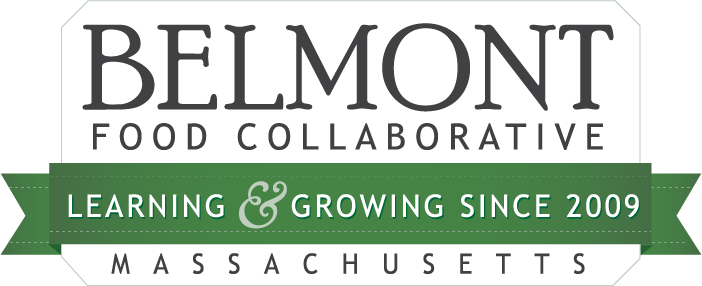Food Assistance
Our mission includes Food Assistance: ensuring access to fresh, local food through matching government benefits at the Belmont Farmers' Market, and by supporting community organizations with similar goals (see details below).
Your donation supports food assistance and our other programs.
Food assistance at the Belmont Farmers’ Market
Matching SNAP dollars We match shopper SNAP dollars at the Belmont Farmers’ Market, up to $25 each Market day per shopper. SNAP is the Supplemental Nutrition Assistance Program (formerly Food Stamps). In the 2025 season, we gave shoppers $24,700 in extra money to help stretch their food budgets.
Shoppers have told us how important that extra money is. Each week, it lets them put fresh, local produce on their tables. Read more about matching SNAP and other benefits at the Market.
Healthy Incentives Program (HIP) The Commonwealth gives SNAP recipients between $40 and $80 in free produce each month. We have three farmers in the program.
In 2025, the state cut the HIP benefit and we created our own program, which we called HIP+. We distributed almost $23,000 in HIP+ benefits so shoppers could buy more fresh, local produce.
Matching WIC & Senior FMNP coupons We match WIC and Senior FMNP (Farmers’ Market Nutritional Program) coupons, which are used to buy produce from participating farmers. These coupons support moms and young children, and seniors. In the 2025 season, we matched $1865 in FMNP coupons.
A long history of food assistance We started matching SNAP in 2011, and have been matching FMNP coupons since 2016. The state’s HIP program began in 2017.
Our food assistance program benefits vendors as well as shoppers Shoppers take home extra food with these benefits, and our vendors get extra sales. So it’s a great deal for everyone!
SNAP match
Began in 2011 with just $956 in matching funds.
It rose to $24,700 in 2025.
FMNP match
Began in 2016, with $825 in matching funds.
Food rescue and distribution
Food For Free In recent years, produce vendors donated unsold produce and baked goods to Food for Free. Their volunteers took the food to local food pantries, meal programs and shelters in the greater Boston area. This lasted through the 2021 season.
Food Link In 2022, Food Link extended their food rescue and distribution program to include Belmont Farmers’ Market. Volunteers pick up extra produce (as well as protein, baked goods, dairy, and eggs) at the end of Market days, and distribute it to food pantries and other organizations to distribute to those in need.
“You’ve got a stellar program.”
– A monthly donor.
Boston Area Gleaners Volunteers glean fields after farmers finish their harvesting, which saves good produce from being plowed under. They deliver fresh produce to food pantries and meal programs. We believe that access to fresh produce is important, so we support their work with frequent donations.
Food For Free
2010: 9,401 lbs
2011: 5,868 lbs
2012: 6,805 lbs
2013: 5,810 lbs
2014: 10,100 lbs
2015: 15,810 lbs
2016: 7,615 lbs
2017: 7,200 lbs
2018: 7,600 lbs
2019: 7,350 lbs
Food Link
2022: 4749 lbs
2023: 5,445 lbs
2024: 6,662 lbs
Donations to BAG
2012: $100, 2929 lbs
2013: $450, 3840 lbs
2014: $1,500, 6749 lbs
2015: $1,500, 8478 lbs
2016: $1,000, 8940 lbs
2017: $1,030, 7210 lbs
2018: $600, 2678 lbs
Belmont Food Pantry donations Shoppers bring non-perishable items to the Belmont Farmers’ Market. A few years ago, we had a program to buy eggs that we donated to the Food Pantry, and in 2016 we donated 120 half-dozen cartons of eggs.
Food education
Community growing We grew hundreds of pounds of vegetables for the Belmont Food Pantry in past summers. The project started in someone’s front yard (2012), added raised beds at Belmont’s Beth El Temple Center (2013), beds at Belmont High School (2014), and beds at Rock Meadow (2015).
We have changed the program to be an educational one: Our garden at Rock Meadow is used to teach families how to raise their own produce.
This institution is an equal opportunity provider.






